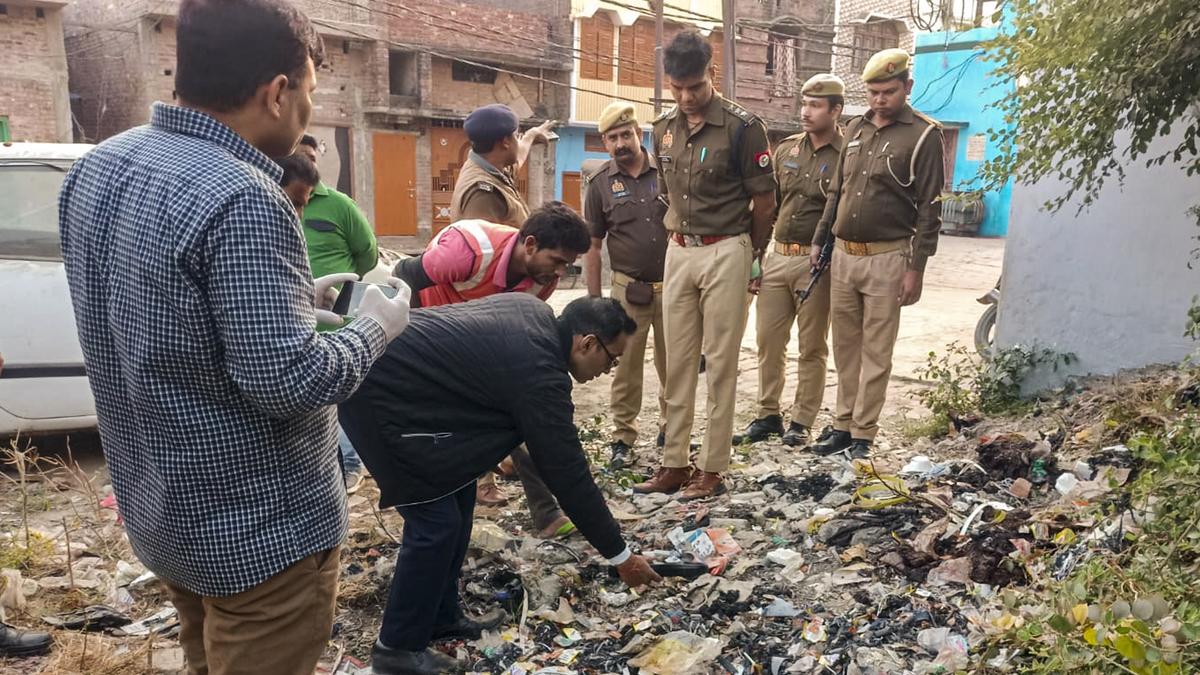 |
|
The aftermath of the November 24th violence in Sambhal, Uttar Pradesh, continues to unfold, marked by the administration's controversial decision to publicly shame those involved. The District Magistrate, Rajender Pensiya, announced the plan to display posters featuring the faces of over 400 individuals identified as participants in the clashes that erupted during a mosque survey. This decision follows a prior announcement by the Uttar Pradesh government to hold those responsible accountable for damages and to publicly display their images. While 32 arrests have been made, the posters aim to identify and apprehend the remaining perpetrators. The strategy, while controversial, reflects a firm stance against the violence that resulted in four deaths and numerous injuries. The decision underscores a broader pattern of using public shaming as a method of deterring future acts of violence and maintaining order, particularly in the context of communal tensions.
The violence stemmed from the survey of a Mughal-era mosque, conducted on court orders following claims that a Harihar temple previously stood on the same site. This action ignited pre-existing tensions in the community, culminating in violent clashes on November 24th. The protests near the Shahi Jama Masjid involved confrontations between protestors and security personnel, escalating into widespread chaos and destruction of public property. The use of posters to identify and shame individuals involved represents a specific approach to dealing with the aftermath of the violence, one that has both supporters and detractors. Some argue it serves as a deterrent and aids in identifying those responsible, while others criticize the method as potentially harmful to due process and creating a climate of fear and reprisal.
The precedent of using public posters to shame alleged perpetrators is not entirely new in Uttar Pradesh. In 2020, a similar strategy was employed in relation to the anti-CAA protests; however, those posters were later removed following a court order. This past experience highlights the legal complexities and potential challenges associated with this approach. The current situation in Sambhal raises questions about the potential for misuse, the balance between public safety and individual rights, and the long-term effectiveness of such measures. The planned peace committee meeting, scheduled for December 5th, suggests an attempt by the authorities to address the situation through dialogue and reconciliation, potentially complementing the more forceful measures of public shaming and arrest.
The Sambhal incident, however, raises significant ethical and legal considerations. While swift action to apprehend perpetrators is crucial, the public shaming aspect raises concerns about potential violations of individual rights. The images displayed may be subjected to malicious use, exacerbating existing tensions and leading to potential stigmatization and social ostracization. This approach may overlook the need for comprehensive restorative justice programs that address the root causes of conflict, promote reconciliation, and prevent future violence. The balance between maintaining public order and upholding individual liberties is a delicate one, requiring careful consideration and adherence to legal and ethical standards. The long-term effects of this approach on community relations require further scrutiny.
The events in Sambhal serve as a case study of the challenges faced by authorities in navigating communal tensions and maintaining public order while respecting individual rights. The use of public shaming as a tool for law enforcement raises fundamental questions about justice, fairness, and the potential for escalation of conflict. Future responses to similar incidents require a comprehensive approach, one that combines law enforcement with conflict resolution, community engagement, and a commitment to due process. The long-term goal should be to foster inclusive environments that promote peaceful co-existence and prevent future outbreaks of violence.
Source: Sambhal administration will put up posters of perpetrators of Nov. 24 violence: District Magistrate
